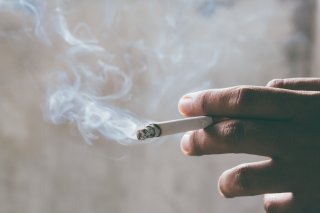Secondhand Tobacco Smoke and Indoor Air Quality
On this page:
- What is Secondhand Tobacco Smoke?
- What are the Health Effects of Secondhand Tobacco Smoke?
- What Can I Do to Reduce Exposure to Secondhand Tobacco Smoke?
Related pages:
- Secondhand Smoke and Electronic-Cigarette Aerosols
- Secondhand Electronic-Cigarette Aerosol and Indoor Air Quality
- Secondhand Marijuana Smoke and Indoor Air Quality
- Secondhand Smoke and Electronic-Cigarette Aerosol Resources

What is Secondhand Tobacco Smoke?
Secondhand tobacco smoke is a mixture of the smoke given off by tobacco products, such as cigarettes, cigars or pipes, and the smoke exhaled by a smoker.
What are the Health Effects of Secondhand Tobacco Smoke?
Secondhand tobacco smoke contains more than 7,000 substances. It can cause lung cancer, cardiovascular disease (e.g., heart disease and stroke), reproductive impacts (e.g., low birth weight), and other diseases. It can result in premature deaths from these conditions among non-smoking adults.
Secondhand tobacco smoke can also cause health problems in infants and children, including sudden infant death syndrome and respiratory and ear infections. Secondhand tobacco smoke is also a trigger that causes more frequent and severe asthma attacks in children.
Learn more about the health effects of secondhand smoke from the Centers for Disease Control and Prevention.
What Can I Do to Reduce Exposure to Secondhand Tobacco Smoke?
There is no known safe level of exposure to secondhand tobacco smoke.
Prohibiting the smoking of tobacco inside or near homes, buildings, vehicles and other enclosed spaces is the only way to eliminate exposure to secondhand smoke and the health risks that may come with it.
If you want to quit smoking, resources are available.
Secondhand tobacco smoke can move between rooms of a building, including between apartment units. Several studies indicate ventilation, filtration and air cleaning techniques can reduce secondhand smoke indoors, but they do not eliminate it.
